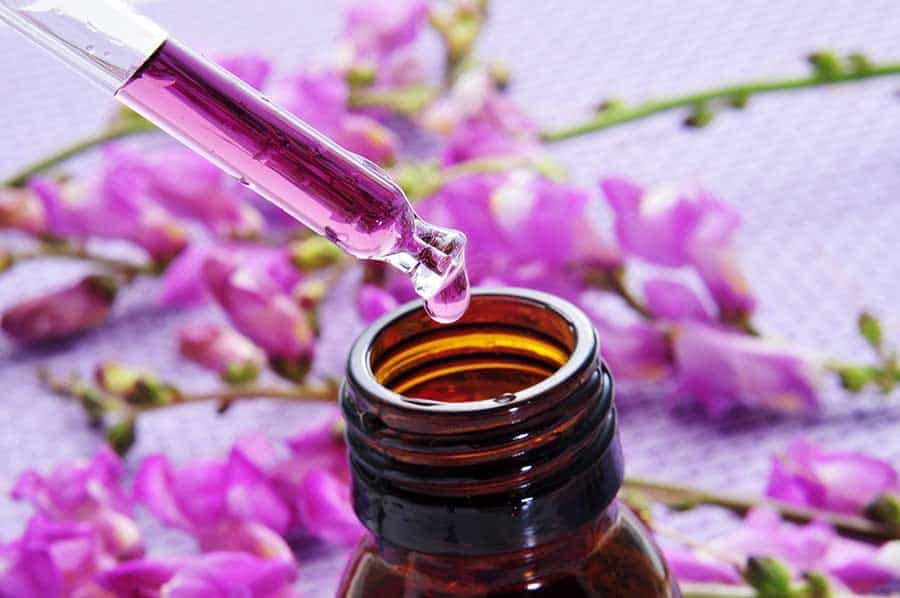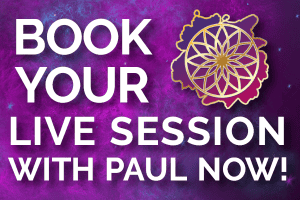
In your local Walgreens, CVS, Whole Foods, and other stores (online too!), you can often spot tiny brown vials with droppers and pretty labels resting on shelves above various vitamins and minerals.
For many sensitive souls, these lovely little tinctures treat problems resulting from stress, sleep, physical chemistry, emotional trauma, and other ailments.
For those who already know the healing effects of these remarkable concoctions, you can thank the pioneer of this unusual technology and product line, Dr. Edward Bach. Bach Flower Remedies help millions of people find peace, relaxation, and happiness. Bach’s work also spawned competitors through the years, some of whom use different processes to distill the essence of many varieties of plants and herbs.
What’s your favorite Bach Flower Remedy? I love Star of Bethlehem because it seems to address several issues related to complex lives and challenges.
We are all complex beings, continually ladened with energy bundles stemming from other people, many events from this life and others, and via portals that connect us to other realms.
The Journey From Secret To Mainstream
Originally, all of humankind’s medicine came from plants, some of which were specifically grown to heal the physical body. This type of medicine, found in the forms of tinctures, salves and teas, has been relatively obscured over the past hundred years. As a matter of fact, much of today’s herbal medicine was considered witchcraft up until the late 1800s.
Within the past 20 years, all of the most popular healing herbs seem to have experienced an upgrade, including the energies and essences of a long list of flowers. Many of these herbs and flowers are now included as part of traditional, western medicine’s prescriptions and practices.
Truth be told, the ancients have been using medicine born from the earth for thousands of years. While Dr. Bach appears to have been the one to have invented flower essences, he was simply the man who perfected the essence distillation process and sponsored its acceptance by the mainstream.
This took over 50 years, mind you. What a journey these flowers have been on!
Flowers, according to Bach, are just like you and me. They have their own unique energies and personalities, each of which connects them to the same planes as us.
After realizing this, Bach started studying flowers and wrote his Bach Flower Remedies book. Soonafer, he began creating his lovely tinctures and selling them. He was quite the pioneer!
Who is Edward Bach?
Edward Bach (1886 – 1936) was a British Doctor who received his degree in London, England, in 1913. He was a medical officer and surgeon, devoting his life to the study of those tiny little creatures known as bacteria. Three years before his death, he started research in practical herbalism at Sotwell.
In his 40s, Bach discovered how deeply connected he was to the world around him. He used his highly attuned senses and years of medical knowledge to match each of the herbs he researched to the human body. He would note how some had a natural calming effect, while others could nudge the subtle bodies one way or another. There were few known people doing this type of work.
Disease is, in essence, the result of conflict between the Soul and Mind, and will never be eradicated except by spiritual and mental effort.
— Edward Bach
Bach was magic. He knew that it was just as important to take care of the spiritual body as it was to take care of the physical. He loved the more subtle aspects to being human – the emotions, soul, and energy bodies that envelop all of us.
Since he was studying how to cure extra-physical ailments, he knew he didn’t need to use the physical body of the flowers. He went out every morning and collected dew from the leaves and petals, bottling it 50/50 with brandy to preserve it. He said it was important for the process to use all four elements:
Water – To collect and carry the plants powerful healing attributes.
Earth – The primary source for plants to sprout.
Air – A source of life and energy for the plants.
Fire – The sun, which activates the plant’s healing abilities.
The dew that was collected from the plant had been heated by the morning sun, letting the condensation take on properties of the plant. By adding the dew to other water and heating it up, Bach learned that he could grow the energy from the plant to fill any vessel, most importantly the tiny tincture bottles we see in stores today.
After a while, Bach started picking flowers and seeping them while they were housed in jars in the sun. He used the new tinctures to freely treat patients. With each new client, he learned about their emotional and physical stressors, share the appropriate flower tinctures with them, then jotted down notes about each flower property as it pertained to the patient’s ailment.
Even though Dr. Bach passed in 1936, the same practices, ones that he birthed long ago, are used today to harness the healing benefits of all the flowers in his repertoire.
Western studies have not been able to confirm Bach’s research, but many claim to find relief from his remedies. As with all medicine, sometimes it’s a bit subjective, or even hit or miss.
As a sensitive and intuitive person, I benefit greatly from Bach Flower Remedies and have come to know them quite intimately. I LOVE THEM!
The Subtle Body
In Sanskrit, your subtle body is called Ssūkṣma śarīra; a combination of your mind, heart, and energy. Some view the subtle body as the whole mystical or divine body, including our chakras, those energy centers that connect with all aspects of the Universe. Others believe that our subtle bodies are connected more intrinsically with our physical form, yet include our spiritual bodies.

Most people believe that the subtle body is everything that isn’t physical. The
reality is that we have several subtle bodies within the whole of our overall subtle body. These subtle bodies include the energetic shapes around our chakras, our entire physical body’s aura or light-body, and the energies that our soul’s connect with throughout any given moment.
While most people have never heard that we have a collection of subtle bodies, it’s all very simple since they can all be managed just like our physical bodies – with kind attention and consistent care.
For those who didn’t suffer from broken legs or appendicitis, The research of Edward Bach was groundbreaking. People who were deeply empathic, compassionate, warm, affectionate, and intuitive found that Bach’s work was life-changing. To Bach and his fans, it’s always been about improving the vibrations and healing the subtle bodies.
Alas, flowers to the rescue!
Types of Remedies
Bach Flower Remedies heal the fractures of your subtle bodies and temporary self-identities, and open pathways to the highest of vibrations, including eternal love and light.
By including these lovely flower essences in our daily routines, we can heal ourselves (or at least reduce the effects of) everything from stress to depression. Flowers are so powerful that many have ingested their essences to trample, transform, and eradicate their addictions.
Hatred, Anger, and Resentment
When people hurt or betray us, we might feel vengeful or hateful. We might also become despondent or harshly detached. When we are consumed by rage, we can become blinded to all the goodness that surrounds us. This blindness can diminish our ability to see the positive aspects of our lives. Using herbs like Beech, Cherry Plum, Heather, Holly, Star of Bethlehem, and Willow, we can sooth the most inflamed emotions within us.
Panic Attacks and Anxiety
Anxiety is often caused by a slew of different inputs: stress at work, social pressure, or a lack of empathy and compassion for yourself to name a few. To help relax and soothe your anxious tendencies, consider Agrimony, Beech Cherry Plum, Chestnut Bud, Impatiens, Red Chestnut, and White Chestnut. For some, these essences are absolutely transformational.
Confusion, Daydreaming, Inattention, and Lack of Focus
It can be difficult to focus on things for long periods of time, especially for people who are very sensitive or those who have an intimate connection to the eternal muse. In the modern day, we are forced to split our attention between multiple tasks at one time.
For creatives and artists, this stressful modern culture can have devastating effects. To stay on task, try Impatiens, Elm, Clematis, Gentian, Vervain, Chestnut Bud, Walnut, and Larch. For artists, painters, psychics, and more, these lovely concoctions are considered nectars from the Gods.
Courage, Confidence, and Low Self-Esteem
The hectic flow of life can often make us feel like cogs in a massive, impersonal system. This can leave us utterly powerless over tedious circumstances and the difficult people around us. When we lose respect for ourselves, we may find it difficult to try something new. We might even doubt the various skills we’ve long mastered.
When you are feeling beat down and small, you might consider trying these flowers: Larch, Willow, Pine, Mimulus, Olive, Gentian, and Agrimony. Warriors, teachers, power-players, and creatives find these elements very helpful to living an empowered and active life.
Motivation, Depression, Insomnia, and Loss of Passion
Even the happiest of us can feel down at times. If you feel a little low, deflated, empty, or fatigued, you might need to adjust your subtle bodies to regain your old Self. Try using Aspen, Larch, Olive, Hornbeam, Mustard, Elm, Pine, White Chestnut, Gentian, Cherry Plum, and Holly.
Anguish, Sorrow, and Grief
If you can’t seem to shake the feeling of loss due to a major event or traumatic death. Try these herbs to initiate the healing process: Pine, Star of Bethlehem, Sweet Chestnut, Water Violet, Wild Rose, and Red Chestnut.
Shock and Trauma
We might find it difficult to compose ourselves after the most challenging events in our lives. Things we used to enjoy doing might now feel scary and, in some cases, create struggle throughout our days.
If you are finding it difficult to recover from a devastating experience, you might find these herbs to ease your suffering: Aspen, Cherry Plum, Star of Bethlehem, Rock Rose, Mimulus, Gorse, Sweet Chestnut, Oak, and Pine.
Healing with the clean, pure, beautiful agents of nature is surely the one method of all which appeals to most of us.
— Edward Bach
Sensitive people may find that supplements leave them jittery, sedated, passive, devoid of opinion, or dulled. For those who struggle to use supplements, or those looking for a more natural way to heal their subtle bodies, Bach’s Flower Remedies can provide remarkable and sustainable relief.
Many swear by Bach’s “Rescue” Remedy (Impatiens, Clematis, Cherry Plum, Star of Bethlehem, and Rock Rose). Although it is his most famous creation, he catalogued a total of 38 species of flowers, further explaining how each of them affects the human subtle bodies.
While some find it easy to reject spiritual, mystical, and other fantastical remedies for a host of reasons, the results don’t lie. Most who try Bach’s remedies report positive reactions and report they cannot imagine a time before their existence. I completely concur, doctor!
Next time you don’t quite feel yourself, meditate on the parts of your life that feel compromised or difficult to handle. Explore the aspects that emerge, then consider your feelings and potential blocks. As you evaluate all the evidence that emerges from examining your subtle body, seek relief in Bach’s Flower Remedies.
In all things, remember that you are born from stardust and you are composed of light and sound. Everything you do, feel, express, and achieve are also made of light and sound. Heal yourself with whatever tonics you feel serve you best. When it comes to transforming and upleveling our realities, meditation, rituals, and prayer are among the most effective.
MAY ALL THE BEINGS IN ALL THE WORLDS, THROUGHOUT ALL THE REALMS, BE HAPPY!




